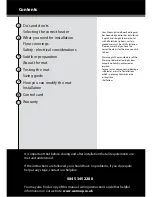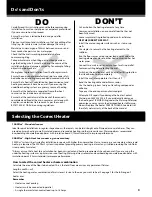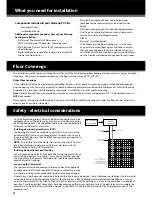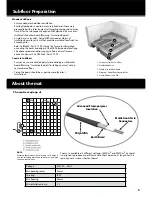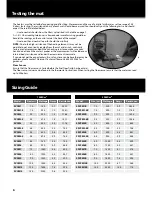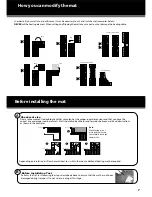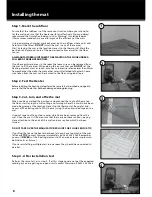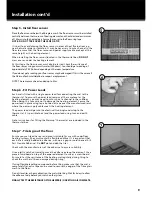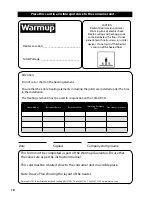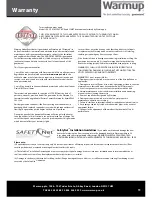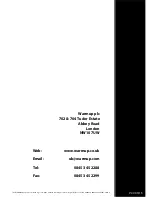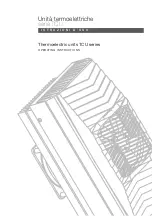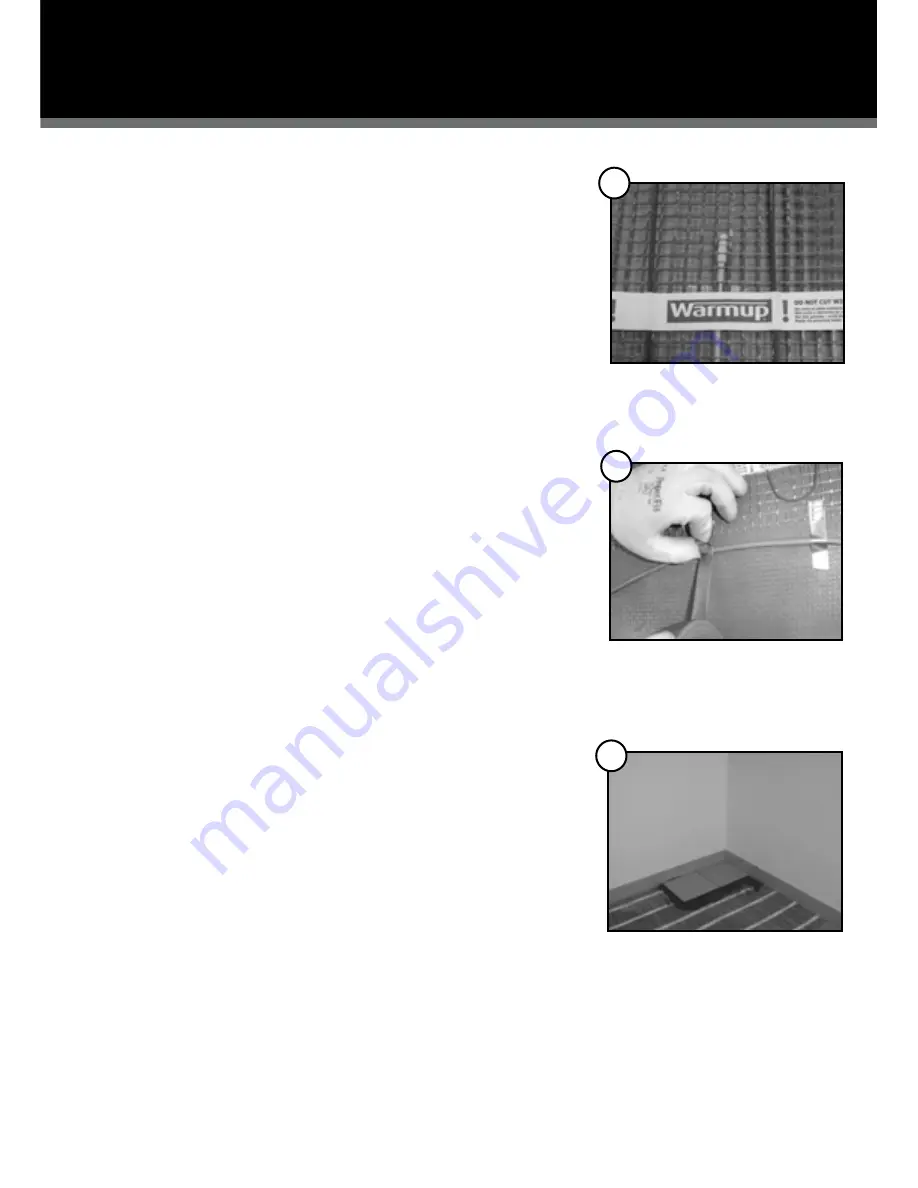
Step 5 - Install floor sensor
Place the floor sensor below the fibreglass mesh. The floor sensor must be installed
centrally between the two runs of heating element and should extend a minimum
of 150mm into the heated area. Secure the sensor to the floor using tape.
NOTE: DO NOT TAPE OVER THE SENSOR TIP.
It is best to avoid placing the floor sensor in areas of heat fluctuations e.g.
near hot water pipes or radiators. It may be necessary to cut a channel in the
floor to ensure that the floor sensor and power supply cable are kept at the
same height as the heating element.
When installing the floor sensor (located in the thermostat box) DO NOT
cross over or under the heating element.
At this stage the floor sensor must also be tested. Check the resistance of
the floor sensor using your multi-meter (20K ohms). You should get a reading of
approximately 9-23K ohms depending on the room temperature.
If you do not get a reading your floor sensor may be damaged. If this is the case call
the Warmup Technical Helpline to request a replacement.
NOTE: The sensor may be extended up to 50m.
Step 6 - Fit Power Leads
Each mat is fitted with a single power lead for connecting the mat to the
thermostat. To ensure the power lead remains at the same level as the
heating element, you may need to cut or chisel a channel in the subfloor.
When doing this take care not to damage the heating element. Secure the
power lead in place using tape but do not tape over the manufactured joint
where the power supply cable meets the heating element.
The power lead will go into the electrical trunking/conduit up to the
thermostat. It is possible to extend the power lead using twin and earth
cable.
Note: Instructions for fitting the Warmup® thermostat are included in the
thermostat box.
Step 7 - Tile & grout the floor
Ensure you use tile adhesives and grouts suitable for use with underfloor
heating systems (they must contain a flexible additive). It is important that
each tile is solidly bedded in adhesive, with no air gaps or voids beneath. (2
Part Flexible Adhesive). Do NOT dot and dab the tiles.
Check with the manufacturers of the adhesive to ensure suitability.
Use a plastic notched trowel to move the adhesive along the element. Use a
piece of cardboard on top of the exposed element to use as a crawl board.
Ensure to test the resistance of the heating mat regularly during tiling to
check the mat hasn’t been damaged during tiling.
If using flexible levelling compound before tiling make sure that the mat is
completely flat, extra tape can be used to secure the edges of the fibre glass
mesh to the floor.
Do not store tiles or heavy objects on the mat while tiling. Wait for 8 days to allow
the adhesive to dry before you switch on the system.
FINALLY TEST THE RESISTANCE OF THE HEATER(S) ONCE TILING IS COMPLETE.
Installation cont’d
5
6
7
9


